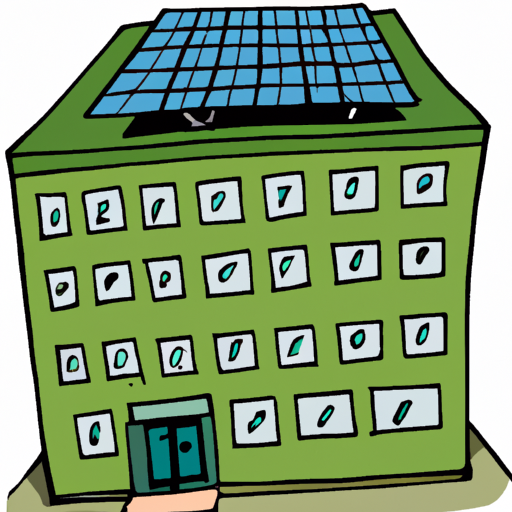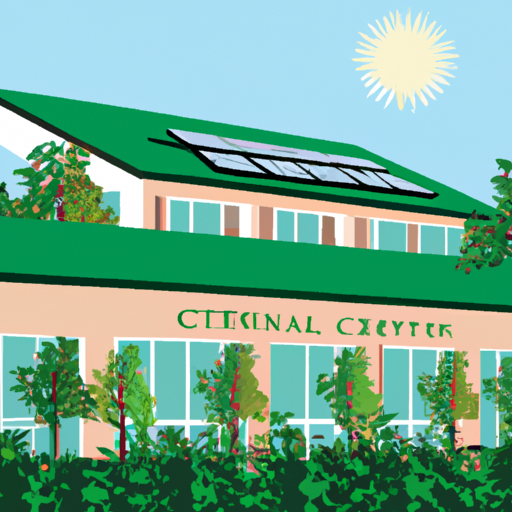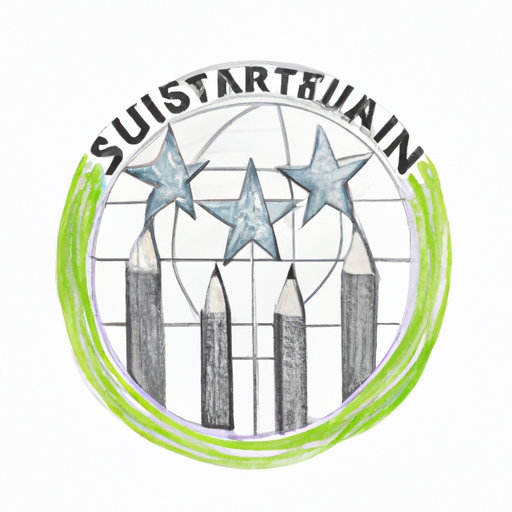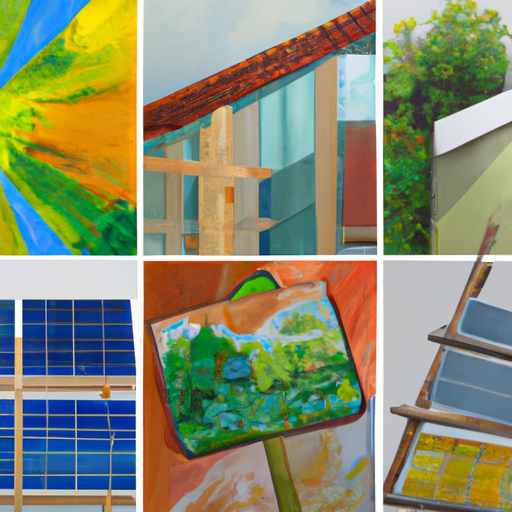Sustainable building certification is important for promoting green practices and reducing environmental impact. They help reduce energy consumption and carbon emissions, resulting in cost savings and resource conservation. LEED, Green Globes, WELL Building Standard, BREEAM and Living Building Challenge are among the widely recognized certifications that evaluate and promote sustainable building practices.
Green building certification is becoming increasingly important in the construction industry as society recognizes the need to minimize environmental impact and promote sustainable practices. These certificates provide a basis for evaluating and recognizing buildings that meet specific sustainability criteria, ensuring that they are designed, built and operated in an environmentally responsible manner. In this article, we explore the importance and benefits of sustainable building certification, focusing on some leading standards such as LEED certification, Green Globes, and the WELL Building Standard. In addition, we will provide an overview of other well-known certifications such as BREEAM and the Living Building Challenge. By understanding these certifications, architects, builders and building owners can make informed decisions about creating more sustainable and healthy buildings for the future.
- 1. Introduction to Sustainable Building Certification: Understanding the Importance and Benefits
- 2. LEED Certification: Study of the leading standards of sustainable construction
- 3. Green Globes: A comprehensive overview of this popular sustainable building certification
- 4. The WELL Building Standard: Improving people’s health and well-being through sustainable design
- 5. Other sustainable building certifications: a look at BREEAM, Living Building Challenge, etc.
1. Introduction to Sustainable Building Certification: Understanding the Importance and Benefits

Sustainable building certification plays a vital role in today’s construction industry as a means of promoting environmentally friendly and energy efficient construction methods. These certificates serve as a benchmark for assessing the sustainability of a building and its impact on the environment.
The importance of sustainable construction certification lies in the urgent need to address climate change and promote sustainable development. With the construction sector being one of the largest sources of greenhouse gas emissions, it becomes imperative to adopt green construction methods that minimize environmental impact. Sustainable building certification provides a framework for achieving these goals by setting specific criteria and standards that buildings must meet.
One of the key benefits of sustainable building certification is the reduction of energy consumption and carbon emissions. By following the guidelines set by these certificates, buildings can minimize energy consumption through efficient design, insulation and the use of renewable energy sources. This not only reduces the building’s carbon footprint, but also results in significant cost savings in terms of energy bills.
Another advantage of sustainable construction certification is the promotion of resource use
2. LEED Certification: Study of the leading standards of sustainable construction

LEED certification, which stands for “Leadership in Energy and Environmental Design,” is one of the world’s most recognized green building certifications. Developed by the US Green Building Council (USGBC) in 1998, LEED has become the leading standard for evaluating and certifying the environmental performance of buildings.
LEED certification evaluates buildings in various categories, including energy efficiency, water conservation, materials and resources, indoor environmental quality, and sustainable site development. Projects are awarded points based on their compliance with certain criteria in each category. The more points a building receives, the higher the level of certification it receives, ranging from certified, silver, gold to platinum.
One of the key strengths of LEED certification is its holistic approach to green building design and operation. It encourages a comprehensive assessment of a building’s life cycle, from site selection and construction to ongoing maintenance and operation. By promoting green practices throughout the life of a building, LEED ensures that environmental considerations are taken into account in every aspect
3. Green Globes: A comprehensive overview of this popular sustainable building certification

Green Globes is a well-known and widely recognized sustainable building certification program that aims to promote green and sustainable practices in the construction industry. Developed by the Green Building Initiative (GBI), Green Globes offers a comprehensive assessment and certification system for building sustainability.
One of the key features of Green Globes is its flexible and customizable approach. The certification process involves a detailed assessment of various aspects of a building’s design, construction and operation, including energy efficiency, water conservation, indoor air quality and waste management. The program allows building owners and developers to select the specific sustainability criteria most relevant to their project, making it a versatile option for a wide range of building types and sizes.
Green Globes uses a rating system that ranges from one to four globes, with four globes representing the highest level of sustainability achievement. This rating system clearly indicates the environmental performance of a building and makes it easy to compare different certified buildings.
To get the Green Globe
4. The WELL Building Standard: Improving people’s health and well-being through sustainable design

The WELL Building Standard is a certification system that focuses on improving people’s health and well-being through sustainable building design methods. Developed by the International WELL Building Institute (IWBI), this certification is based on scientific research and evidence-based strategies to optimize the architectural environment for the benefit of occupants.
The primary goal of the WELL Building Standard is to create spaces that promote healthy and comfortable environments, ultimately improving people’s overall well-being and productivity. It considers various aspects of building design and operation that can affect human health, such as air quality, water quality, lighting, acoustics, thermal comfort and ergonomics.
One of the key features of WELL certification is its focus on indoor air quality. It sets strict requirements for pollutant control, ventilation intensity and air filtration systems to ensure that passengers breathe clean and healthy air. This is especially important given that indoor air pollution can be significantly higher than outdoor air pollution, and poor air quality can lead to various health problems.
5. Other sustainable building certifications: a look at BREEAM, Living Building Challenge, etc.

In addition to LEED certification, there are several other sustainable building certifications that have gained recognition and popularity in recent years. These certifications aim to promote environmentally friendly and sustainable construction methods, addressing various aspects of sustainability such as energy efficiency, water conservation and material sourcing. Here we take a closer look at some of these certifications, including BREEAM and the Living Building Challenge.
1. BREEAM (Building Environment Assessment Method): BREEAM is a widely recognized certification developed in the United Kingdom in 1990. It assesses the sustainability of buildings based on categories such as energy, water, waste, pollution, management and materials. BREEAM offers different certificates for different types of buildings, such as new construction, refurbishment and used buildings. It is known for its integrated approach and has been adopted worldwide, providing a benchmark for sustainable construction methods.
2. Living Building Challenge (LBC): The Living Building Challenge is an ambitious certification program designed
In summary, sustainable construction certification plays a critical role in promoting environmentally friendly and healthy construction methods. They provide a clear framework for developers, architects and stakeholders to design and construct buildings that minimize their impact on the environment and prioritize human well-being. LEED, Green Globes, WELL Building Standard, BREEAM, Living Building Challenge and other certifications offer a range of options for different project types and priorities. By earning these certifications, buildings can demonstrate their commitment to sustainability, attract tenants and investors who prioritize green practices, and contribute to a greener, healthier future for all. As demand for sustainable buildings continues to grow, these certifications will play an increasingly important role in shaping the future of the construction industry.
 Purex find
Purex find